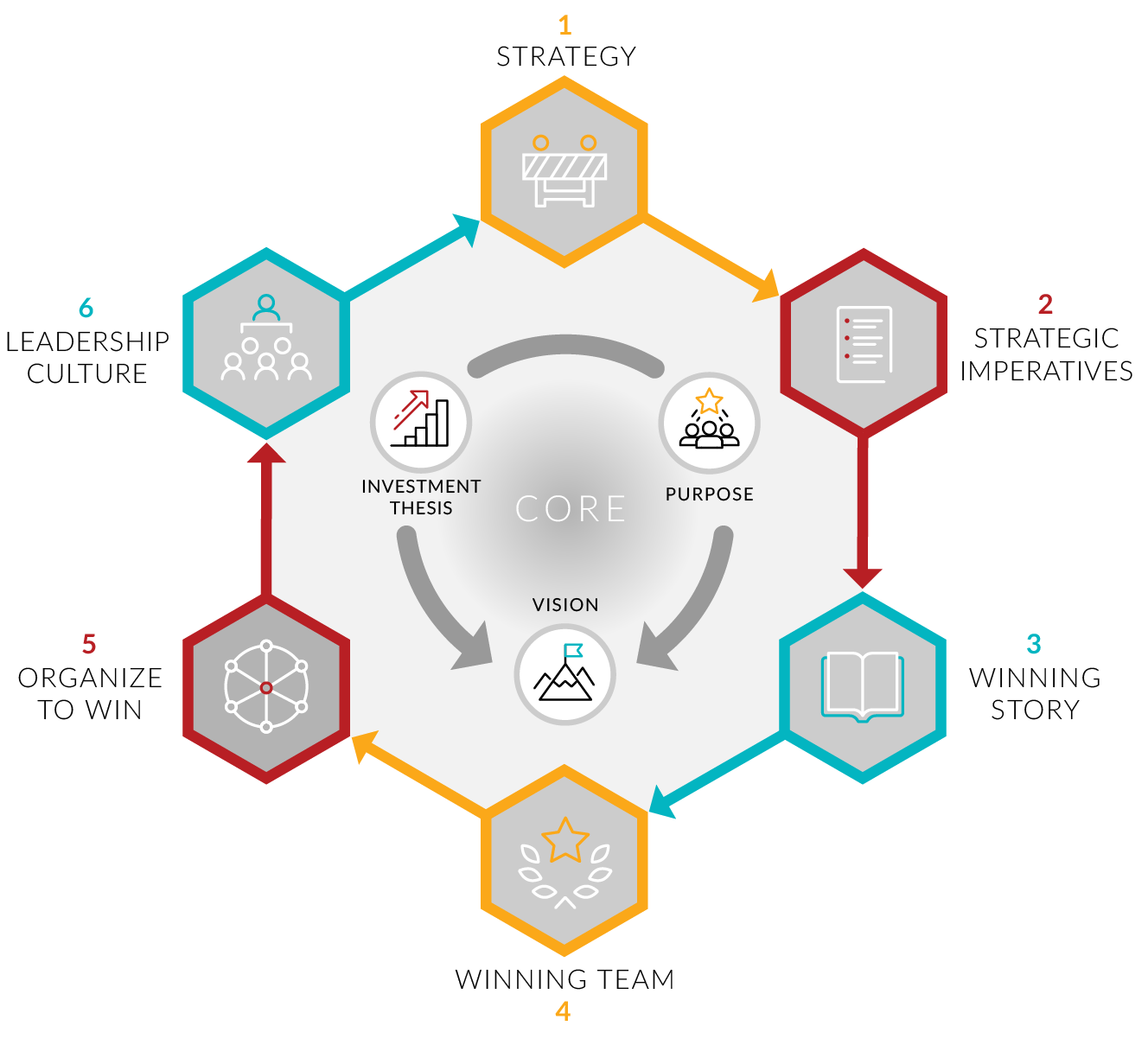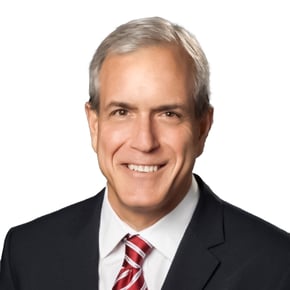While the pandemic continues to present senior executives with unprecedented challenges, it also offers CHROs a rare opportunity to reinforce the sustainability of their businesses.
For two pandemic-drenched years, I’ve been talking with CEOs and CHROs as they navigate widespread turmoil and uncertainty and try to meet market demand. Constantly fluctuating restrictions on travel and work, increasingly severe disruptions in supply chains, and the “Great Resignation” continue to make it increasingly difficult to have the right talent and the right resources on hand at the right time. Many senior executive leaders have tried switching their playbook to keep up with what’s happening. The question is which framework is best to adopt in these crazy times? Which approach will consistently drive value creation and performance? The answer, I believe, is to go back to tried-and-true basics: play to win.
THE "PLAY TO WIN" FRAMEWORK

Three things sit at the center of the “Play to Win” framework: a relevant investment thesis, a clear purpose, and the operationalization of both in a vision.
Together, they form a solid foundation for sustainability. Displayed around the center of the diagram above are six critical aspects of the business that work hand-in-hand with that foundation. The Chief Human Resource Officer plays an important role in three of those six: 1) creating a winning team, 2) organizing to win, and 3) shaping the leadership culture. This article focuses on the latter two. (For an introduction to the center of the framework and a discussion of the first four aspects, see my article "Success doesn't Guarantee Survival."
 5. Organize to Win
5. Organize to Win
When all hell broke loose back in 2020, some management teams defaulted to crisis mode, putting out fires one by one by one. Unfortunately, playing any version of the game of “whack-a-mole” tends to be not as effective as coming together as one team with a clear focus, structure, and cadence on value creation. This was true before COVID. It is true during the pandemic. And it will be true afterward.
When I stepped into the CHRO role at AP Moller-Maersk, the $60B corporation had multiple business units and a mere 400 people working out of headquarters. For a company that size, that number of corporate people sounds quite good. The problem, I soon discovered, was what we had those 400 smart, ambitious individuals doing. Many of their roles were designed to keep tabs on the business units: day after day, they would read reports, follow up with questions, provide programs, etcetera. And day after day, they did a lot of work for the businesses that looked great on their performance appraisals, but which, in all honesty, didn’t add value to the company.
To organize the company to win, we revisited that. The CEO, CFO, and I focused our review on synchronizing four areas, not in any specific order, in which the corporate office should be adding value. We asked ourselves:
1. Portfolio Management • Which companies should we own? Which companies would benefit by being under someone else’s ownership? What were the implications?
2. Capital Allocation • To get the best allocation of capital and the best possible returns, where and in what ways should we challenge our business units on their strategies?
3. Executive Talent Management • How should we develop and deploy executive talent into our most critical roles? Who should be doing what?
4. Enterprise Performance Management • What targets should we, in collaboration with the business units, set to deliver the intended level of profitable growth?
The reason we focused on these particular levers was to ensure a dramatic improvement in the performance of the business. From a financial perspective, we had two expectations: 1) top quartile profitability in the competitive set, and 2) returns across the business cycle that exceed the weighted average cost of capital. For each business unit, we intentionally and deliberately raised the bar on what was acceptable performance, who would be responsible for these outcomes, and how they would lead.
While it was not our goal to reduce corporate headcount through this exercise, that was one of the outcomes of our review. Roll call at HQ dropped from 400 to 210.
The other enabling outcome was the implementation of a non-bureaucratic operating system focused on improving performance and allocating capital and talent. That new operating system gave an explicit, predictable structure and cadence to decision-making across the company. Once we got it running, it worked like clockwork. It also avoided creating a lot of confusion throughout the organization, simply because the “tone from the top” was crystal clear and consistent. Which brings me to the last, and most often overlooked, step in the “Play to Win” framework: shaping the leadership culture.
Shaping Leadership Culture
 6. Leadership Culture
6. Leadership Culture
This is not as mysterious as it sounds. The leadership culture is a subset of the overall company culture. It is made up of, essentially, two items:
- Behaviors you expect of your leaders (at least a few fundamental ones that will align with your purpose and vision and support the execution of your investment thesis); and
- Actions you will take when people are not exhibiting those behaviors.
The expectations you set form a baseline for what is acceptable for your leaders. And what is acceptable for them sets the tone for what’s acceptable for everyone in the organization. For example, Wayne Calloway, former CEO of PepsiCo, had a mantra he instilled in the leadership culture while I was working there. It was simply: “results+integrity”. By integrity, he meant to play the game “the right way”.
- Do what you say.
- Say what you mean.
- Be responsible.
- Treat people with respect.
- Have your people trust you.
Back then, that mantra succinctly aligned the behaviors expected of people with a vision of profitable growth. The solid foundation it gave to the leadership culture helps inform PepsiCo’s current emphasis on more sustainable food systems.
However, changing expectations doesn’t necessarily change behaviors across the board. I have, unfortunately, seen many organizations in which, in spite of best efforts, there exist bad actors who continue to misbehave. You know what I’m talking about. Joe gets great results, but he has a reputation for being abusive. The corporate code is to treat everyone with respect. Every time Joe “misbehaves”, out come the excuses. “It’s just Joe being Joe. He’s that way. He doesn’t mean any harm. And he gets great results. Leave him alone. He’s fine….” If you don’t respond to those excuses, if you let them be the final word on the matter and don’t punish Joe for disrespecting another person, then people will hear that as your tacit approval of his misbehavior. And, from that moment on, they will assume they don’t have to treat anyone with respect.
Ignore bad behavior when it occurs and you literally lower the bar for all. Address it and it becomes, at best, a distraction that causes pain across the organization. So what do you do?
Ask three questions:
- What will be the consequences of condoning this behavior?
- How will this reflect on your leadership?
- Knowing this, what action(s) will you take?
One of the things I’ve learned in the thirty-plus years I’ve been helping leaders and companies level up is that unprecedented challenges don’t always call for extraordinary leadership approaches. Often a framework like “Play to Win”, one that has driven value creation and performance in all kinds of circumstances and stood the test of time, will do.
So go. Set your strategy, align on imperatives, tell your story, create a winning team, organize to win, and shape your leadership culture. Reinforce the sustainability of your business.
Play to win.

